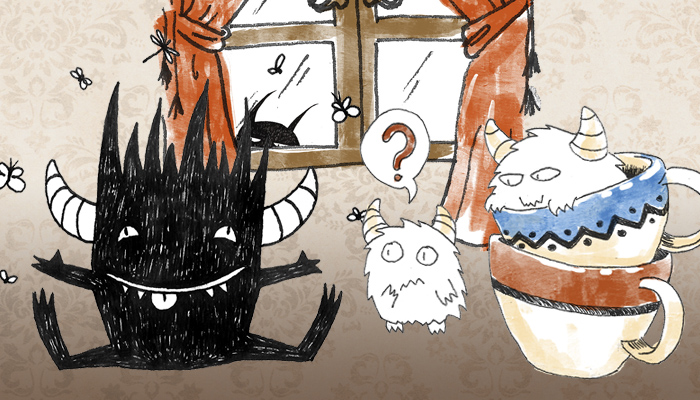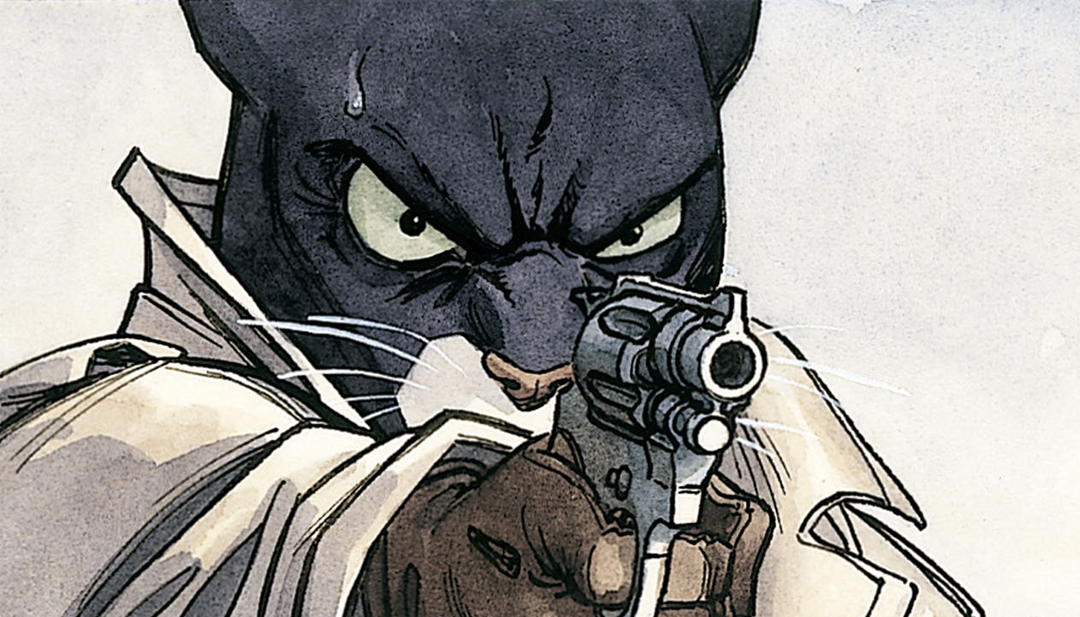One of the most important elements in the Blacksad stories is combat. Violence is one of the key ingredients in the noir genre, and in the Blacksad roleplaying game we have opted for a quick system in order to represent this. This system is born from the basic game mechanics we’ve seen and it is nurtured by the same concepts. Generally, combats are resolved by means of challenges where the difficulty is defined by the Defense of the target. To understand better how an action is carried out, the combat is divided into a series of sequences that will serve as a way of defining the time in the scene.
Combat sequence
Combat is a constant where the characters attack and respond to the attacks they receive. The combat sequence allows us to encapsulate the combat in pages, much like a comic book. Each page is divided into strips, which correspond to each character’s turn. Thus, a page is made up of strips of each character and, once everyone has taken action, it moves on to the next page. A page is a way to measure time in an abstract manner and it is equivalent to a time range of five to ten seconds within the story we are playing. Each strip is a fraction of this time range and many successive strips can practically occur at once, but they are sequentially resolved to make it simpler. The basic combat sequence is developed in the following manner:
- The game master decides which characters are aware of the presence of their opponents. If there exists a fighter who is unaware of the presence of his opponents, an initial page of surprise is created before starting normal combat. On this surprise page, only the characters aware of the combat have a strip, those who are to be surprised are unable to act yet. If all of the characters are aware of their opponents the surprise page doesn’t exist and it directly starts on a normal page where all characters have their strips to take action.
- On this page, characters act in turns and in order based on their Initiative stats. If one of them wants to get a head start, he can spend one Drive point to act whenever he wants. On the contrary, if what he wants to do is delay the action, spending a point isn’t necessary. In any case, the order is reestablished in the following page. In the surprise pages, the surprised characters do not participate and, therefore, cannot take action.
- Once all of the characters have had their strip and have carried out their action or actions, the page ends and a new one begins: the character with the highest Initiative stats act once again and step 2 and 3 are repeated until the end of the combat.
Initiative
Initiative stats are fixed values that are analyzed by adding the character’s Intellect and Reflexes. This means that, under normal circumstances, the characters act in the same order.
If a main character and a secondary character happen to have the same Initiative stats, the player who interprets the main character is the one who decides who gets to act first on each page. If the characters happen to reach an impasse or if we are dealing with secondary characters, the game master must be the one to decide the order of the strips.
Nevertheless, during a combat page, any player can spend one Drive point to give their character an advantage and start before their turn according to their Initiative stats. When many players decide to spend their Initiative to gain an advantage, the one who acts first is the one who has first declared this gesture.
Attack
The attack action should be, according to the logic explained previously in the section “Basic mechanics”, a conflict. However, to reduce the number of dice rolls and the purpose of making it thrilling and brief, it is resolved like a conflict. Additionally, one single dice roll will help determine if the attack has had an impact and, if that’s the case, how much damage it has inflicted.
To perform an attack, we will make use of the character’s Reflexes stats along with a trait that seems appropriate. As opposed to other challenges, the difficulty of dice rolls isn’t a value fixed by the game master, rather it is determined by the target. The difficulty level of an attack corresponds to the value of the target’s Defense stats, since it’s presumed that the target will be defending itself. If by any chance the target weren’t defending itself, the Defense would be considered a 0.
Like in any challenge, the character rolls the dice that correspond, rerolls if there exists the possibility to do so, applies the appropriate trait and, last but not least, adds up the successes. Remember that the target’s Defense is the attack’s difficulty, hence, the failures that nullify the successful results of that dice roll. If the final result has one or more successful results, the attack has had an impact and the harm inflicted will depend on the number of successes obtained.
Damage
When an attack is successful, it’s time to determine the damage it has caused. This will depend on the obtained successes in the attack dice roll (after discarding those that are nullified by failures, including the target’s Defense, which as we can recall, acts as extra failures). Each success inflicts damage that will depend on the kind of attack performed, as seen on the next chart. It’s convenient to remember that a 6 on a tension die equals two successes, so it will inflict double damage. By choice of the game master, a result of “No, but…” (A balance of zero between success and failure) could be considered a scratch instead of a failure with a temporary positive aspect. A scratch will only inflict half of the damage shown on the chart, which will be rounded to a lower value.
| Attack or weapon | Damage | Reach |
| No weapons | Fortitude | Immediate |
| Knife | Fortitude+1 | Immediate |
| Saber, sword | Fortitude+2 | Immediate |





